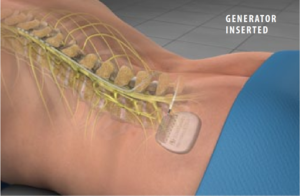Orlando: 9145 Narcoossee Rd., Suite A200, 32827
407-329-6907
 A remote control allows you to turn stimulation on and off, increase and decrease the level of stimulation, and target different pain areas in your body using program settings designed specifically for you.
A remote control allows you to turn stimulation on and off, increase and decrease the level of stimulation, and target different pain areas in your body using program settings designed specifically for you.